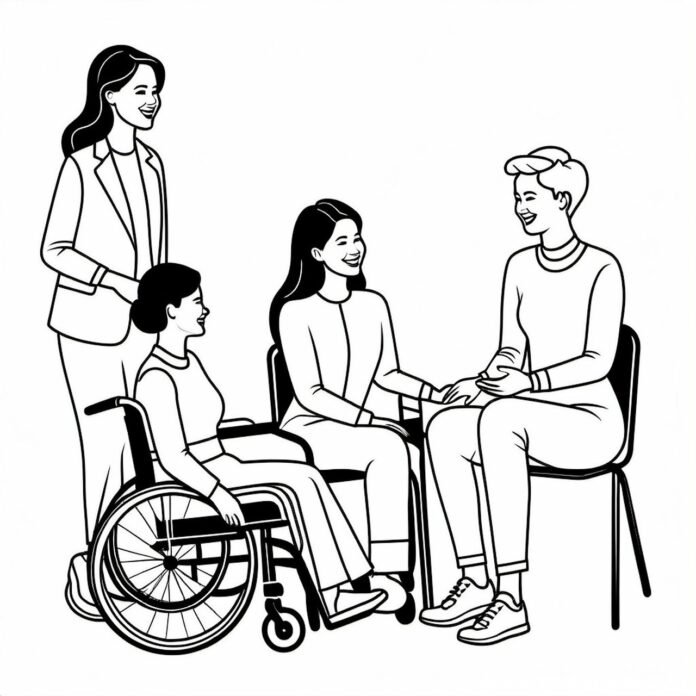Key Takeaways
- Accessible housing supports adults with disabilities in achieving greater independence, safety, and connection to their communities.
- Vital features include no-step entries, vast halls, accessible kitchens and bathrooms, and adaptable layouts.
- Universal design principles create spaces that work for everyone, not just those with mobility needs.
- Programs, policies, advocacy, and financial support are critical to accessible housing.
- Knowledge of resources and active planning can help adults and families better navigate accessible housing challenges.
Why Accessible Housing Matters
For many adults with disabilities, the nature of their housing can define how fully they engage with daily life. Standard homes often come with physical barriers—from single steps at a doorway to cramped hallways—that can make even basic movements difficult or unsafe. According to statistics from the Centers for Disease Control and Prevention, nearly 61 million American adults live with a disability, making the need for accessible homes widespread and urgent. Every barrier-free home represents a tangible step toward equity, health, and dignity for millions.
The ability to enter, exit, navigate, and use a home safely gives people a critical sense of autonomy and dignity. Accessible housing is not defined solely by wheelchair ramps, which are often vital, but by a mix of thoughtful design decisions. Solutions that address various medical, sensory, and cognitive needs are possible. As independence grows, so does self-esteem, leading to improved quality of life and mental well-being for countless individuals and their families. Ensuring every adult with a disability can live safely at home often means they stay healthier and happier, further reducing the burden on healthcare systems.
Core Elements of Accessible Homes
Accessible homes are built on a foundation of specific physical and technological features that break down barriers. Step-free entries don’t just ease wheelchair or walker access—they help parents with strollers, delivery workers, and visitors with temporary injuries. Wide doors and halls, typically at least 36 inches, let mobility devices pass through easily and allow residents to carry groceries, laundry, or packages without struggle. Beyond width, good corridor lighting helps those with vision impairments and reduces fall risk for everyone. These accessible features are vital as they provide convenience and safety for many individuals, including visitors with age-related mobility challenges. Forward-thinking accessible housing solutions empower many to participate actively in work, education, and communities.
Kitchens often pose unique challenges, with high counters, deep sinks, and inaccessible cabinets. Solutions can include pull-out shelves, lower work surfaces, side-opening ovens, and single-lever faucets. Bathrooms with roll-in showers, grab bars, anti-slip flooring, and space for turning or transferring from wheelchair to toilet bring safety and comfort. Modern technology further enhances accessibility: voice-activated smart home controls, motion-sensitive lights, and automated doors mean people with limited mobility or dexterity can be more self-reliant. Paying attention to these details ensures that accessible homes support a truly independent lifestyle for adults at any life stage.
Checklist of Common Features
- Zero-step or ramped entrances with firm, slip-resistant surfaces
- Hallways and doorways should be at least 36 inches wide to facilitate easy passage
- Roll-in and barrier-free shower spaces, with installed shower benches
- Accessible kitchen elements such as pull-down shelving and adjustable counters
- Light switches, thermostats, and controls set at low heights and reachable from seated positions
- Non-slip flooring materials in all areas to help prevent falls
Designing for Flexibility and Inclusion
Accessible homes are most successful when they are flexible. As needs and abilities change over a person’s life, houses that can adapt reduce disruption and foster ongoing independence. The principles of universal design are critical here—they call for homes that are intuitive, safe, and usable by anyone, regardless of their physical condition or age. Research from the U.S. Department of Housing and Urban Development demonstrates that environments designed for universal access accommodate families with young children, older adults, and guests with temporary injuries, in addition to people with permanent disabilities. By investing in these adaptable elements, families can avoid costly renovations and upheaval later, creating a home that truly grows with its residents.
Examples of universal design include non-slip flooring, lever-style door handles instead of knobs, and open-plan layouts that minimize cramped or congested spaces. Movable cabinets, adjustable closet shelving, and flexible lighting options can be adapted over time. Even aspects that seem minor—like a door that swings both ways—can make daily routines substantially easier. The result is a home that doesn’t have to be “reworked” as people grow older or as needs change, enhancing safety and comfort for everyone. When architects initially embrace universal design, living spaces become more welcoming and accessible to people from all walks of life.
Community and Location Considerations
An accessible home is about much more than architecture—it’s also about its connection to the broader world. Proximity to public transportation can be a decisive factor in retaining independence, especially for those unable to drive. Reliable transit links enable access to employment, community centers, medical care, and social opportunities. Homes near healthcare clinics or pharmacies allow easier management of appointments and medication refills, which is crucial for those with chronic health conditions. The physical location of a home can affect how easily residents can maintain social ties and access the services they need to thrive.
- Nearby transit stops and paratransit service routes
- Accessible grocery stores and shops, some offering delivery
- Parks, libraries, and recreation centers are designed with inclusivity in mind
- Opportunities for community engagement and peer connections
Social integration and a sense of belonging significantly impact mental health and overall well-being. Communities that are walkable, welcoming, and offer activities designed for all abilities are vital. In such environments, adults with disabilities can build meaningful relationships, pursue hobbies, and enjoy spontaneous outings. When accessible housing is paired with an inclusive community, residents gain far more than just a place to live—they find a space to belong.
Affordability and Financing Options
Even when the importance is evident, many people find the cost of accessible housing daunting. Specialized building materials, equipment, or modifications can be expensive, especially when retrofitting an older home. However, several programs can help lessen the financial load. Depending on location and eligibility, residents may benefit from local or federal grants, low-interest loans, or public-private partnership initiatives targeting accessible housing. Being informed about these options is essential, as funding can differentiate between a fully accessible home and one that falls short in critical ways.
Some familiar sources of assistance include Section 8 housing vouchers, home modification grants through nonprofit organizations, and community development programs. Connecting with social workers or advocacy organizations familiar with navigating these options is often beneficial. This financial support usually determines whether someone can move into a home that meets their needs, improving their life. In addition, some municipalities offer tax incentives for accessibility modifications, making essential upgrades more feasible for homeowners.
Support Services That Enable Independence
Housing alone is only one piece of the puzzle. For lasting independence, accessible homes often need to be complemented by various supportive services. These may include in-home health care, daily living assistance, delivered meals, transportation to medical appointments, and opportunities for occupation or recreation. Some residents may require help only occasionally, such as during recovery from surgery, while others rely on more constant assistance for daily routines. Support services can also include technology training to help individuals use smart home devices to increase their self-sufficiency.
Flexibility in support—whether provided by professionals or through community-based programs—enables people to age in place, continue working, or socialize as desired. Family members and friends also report less stress and greater peace of mind when appropriate support systems are in place. Community partnerships and nonprofit programs further bridge the gap, ensuring adults with disabilities continue to feel empowered and respected, even as their needs evolve.
Policy and Advocacy: Shaping the Future
Over time, legal guidelines and advocacy have helped pave the way for inclusive, accessible housing. Today, building codes, design requirements, and fair housing laws direct many aspects of new construction and renovation. Still, continued advancements frequently come from individuals sharing their stories and advocating for change. As recent New York Times coverage notes, public awareness and education can directly influence what’s possible locally and nationally. Policy and advocacy encourage innovation, motivating developers and architects to think beyond basic requirements toward housing that exceeds expectations.
Participation in civic life, supporting community groups, and staying informed about evolving legislation ensures that people with disabilities—and all who benefit from accessible homes—have a seat at the table. This way, more homes can be built or modified to meet diverse needs. The shared goal is to create a future where accessible housing is not the exception, but the norm, and individuals of every ability can live with security, comfort, and pride.























